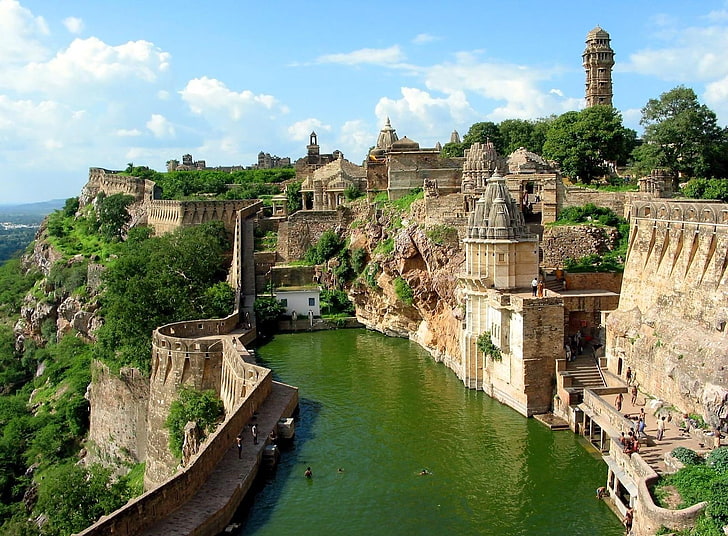The Chittorgarh Fort also known as Chittorgarh or Chittor Fort is one of the largest forts in India. It is a UNESCO World Heritage Site. The fort was the capital of Mewar and is located in the present-day town of Chittorgarh. It sprawls over a hill 180 m (590.6 ft) in height spread over an area of 280 ha (691.9 acres) above the plains of the valley drained by the Berach River. The fort covers 65 historic structures, which include four palaces, 19 large temples, 20 large water bodies, 4 memorials and a few victory towers.
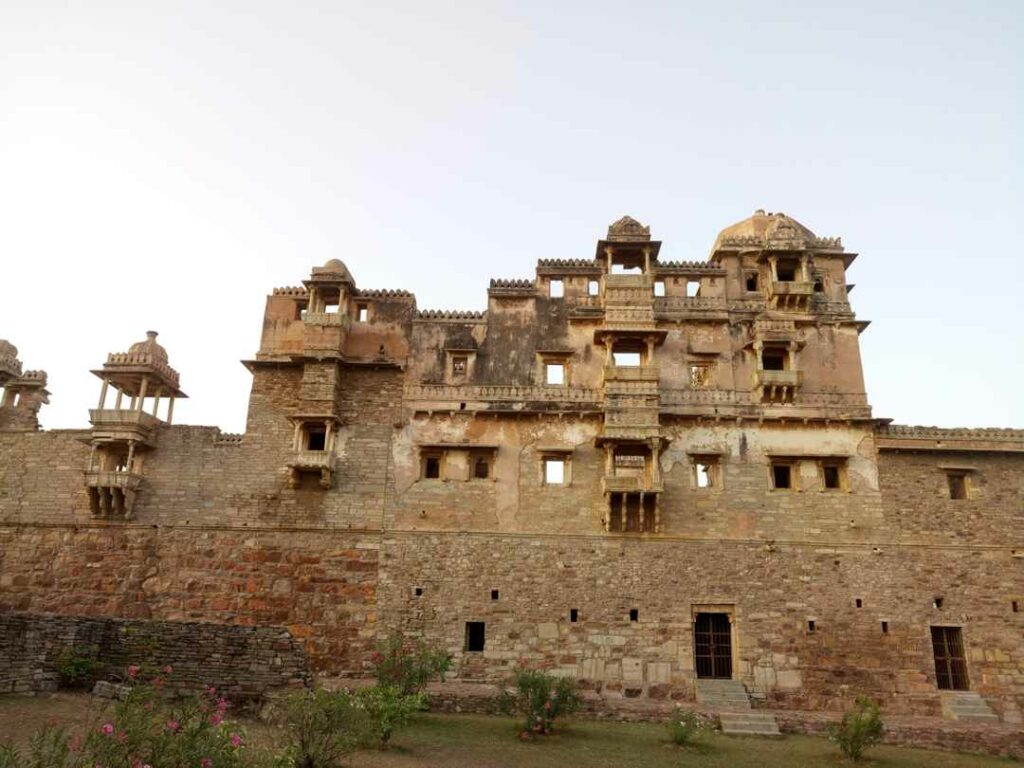
In 2013, at the 37th session of the World Heritage Committee held in Phnom Penh, Cambodia, Chittorgarh Fort, along with five other forts of Rajasthan, was declared a UNESCO World Heritage Site, as a group called the Hill Forts of Rajasthan.
The fort, which is roughly in the shape of a fish, has a circumference of 13 km (8.1 mi) with a maximum length of 5 km (3.1 mi) and it covers an area of 700 acres. The fort is approached through a difficult zig-zag ascent of more than 1 km (0.6 mi) from the plains, after crossing over a limestone bridge.
The bridge spans the Gambhir River and is supported by ten arches (one has a curved shape while the balance has pointed arches). Apart from the two tall towers, which dominate the majestic fortifications, the sprawling fort has a plethora of palaces and temples (many of them in ruins) within its precincts.
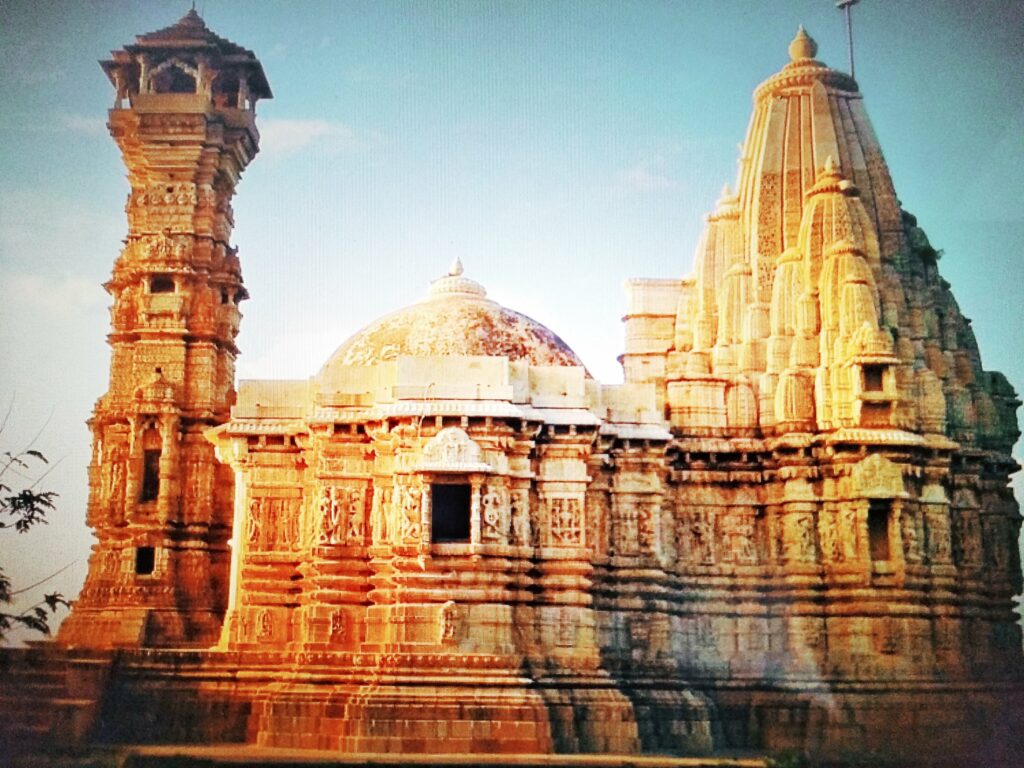
The 305-hectare component site, with a buffer zone of 427 hectares, encompasses the fortified stronghold of Chittorgarh, a spacious fort located on an isolated rocky plateau of approximately 2 km length and 155 m width.
It is surrounded by a perimeter wall 13 km (8.1 mi) long, beyond which a 45° hill slope makes it almost inaccessible to enemies. The ascent to the fort passes through seven gateways built by the Mewar ruler Rana Kumbha (1433–1468) of the Sisodia clan. These gates are called, from the base to the hilltop, the Paidal Pol, Bhairon Pol, Hanuman Pol, Ganesh Pol, Jolla Pol, Laxman Pol, and Ram Pol, the final and main gate.
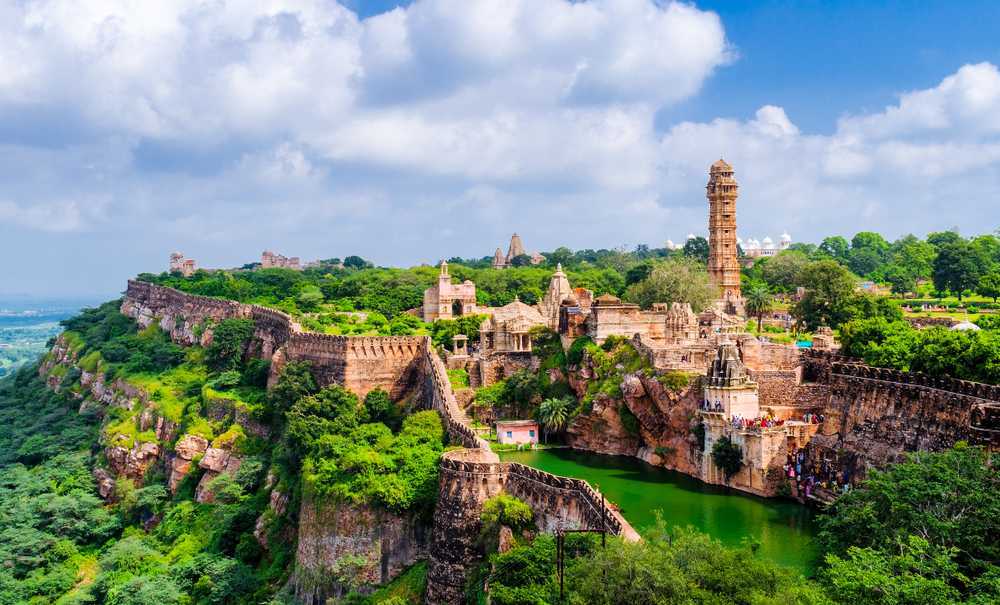
The fort complex comprises 65 historic built structures, among them 4 palace complexes, 19 main temples, 4 memorials, and 20 functional water bodies. These can be divided into two major construction phases. The first hill fort with one main entrance was established in the 5th century and successively fortified until the 12th century. Its remains are mostly visible on the western edges of the plateau.
The second, more significant defence structure was constructed in the 15th century during the reign of the Sisodia Rajputs when the royal entrance was relocated and fortified with seven gates, and the medieval fortification wall was built on an earlier wall construction from the 13th century.
There are seven entrances which are −
- Padan Pol
- Bhairon Pol
- Hanuman Pol
- Ganesh Pol
- Jodala Pol
- Laxman Pol
- Ram Pol
- The fort also includes palaces, temples, and water bodies.
Temples
When the fort was built in the 5th century, it had only one gate. Sisodia Rajputs renovated the fort and built six more gates. The temples related to Hindus and Jains built inside the fort are
- Kumbha Shyam Temple
- Mira Bai Temple
- Adi Varah Temple
- Shringar Chauri Temple
- Sattaes Devri
- SatBis Devri
- There are two towers which are the other Jain monuments and these are Kirti Stambh and Vijay Stambh.
Palaces
Rana Kumbha Palace can be accessed from the seventh gate. Rana Ratan Singh Palace was constructed in the 19th and 20th centuries. Fateh Prakash Palace is also there which has been converted into a museum.
The Seven Gates
All the gates were built for security purposes and not surprisingly, the gates have special architectural designs. The gates have pointed arches, to make sure it provides extra protection should there be an attack. Notched parapets were built on top of the gates, enabling soldiers to shoot arrows at the enemy army.
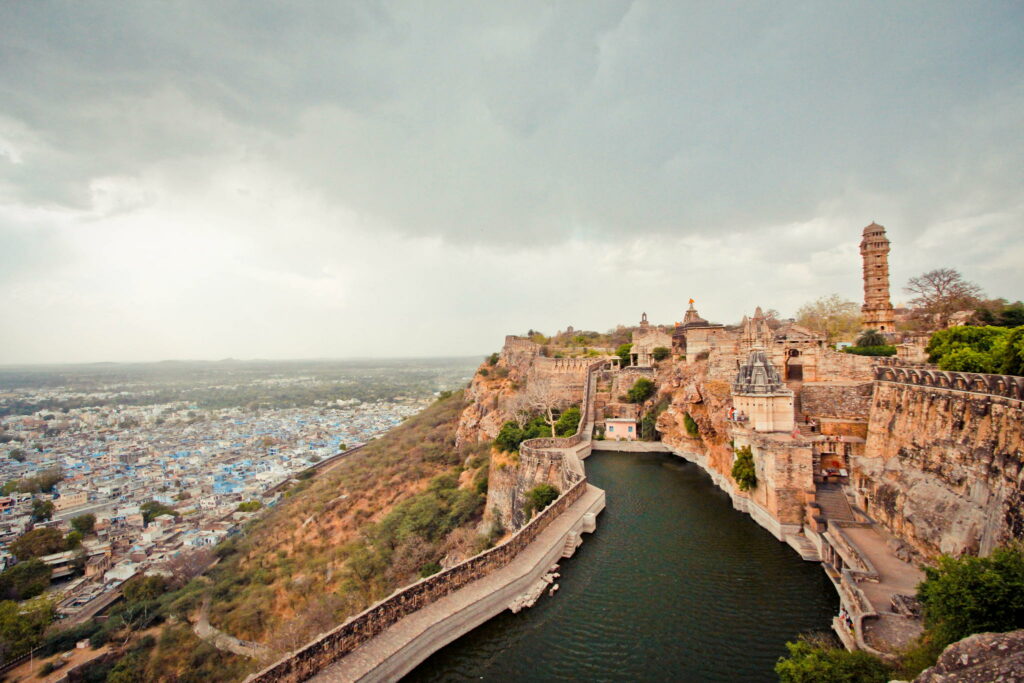
There is a common road that runs inside the fort, connecting all the gates. The gates, in turn, lead to various palaces and temples within the fort. All the gates have historical significance. Prince Bagh Singh was killed at the Padan Gate during one of the sieges in the year 1535 AD. During the last siege, led by Emperor Akbar, Rao Jaimal of Badnore was allegedly killed by the Mughal emperor himself. This incident is said to have taken place somewhere in between the Bhairon Gate and Hanuman Gate.
Architecture
All the seven gates of the fort are nothing but massive stone structures, aimed at providing maximum security from the potential threat of enemies. The entire fort is built in such a way that it makes it almost impregnable for the enemies to enter. To ascend the fort, one has to go through a difficult path, which itself proves that the architectural design of the fort was aimed at keeping the enemies at bay.
This is one of the main reasons why the fort was sieged by various kings at regular intervals. In between the second and the third gate, there are two Chhatris or cenotaphs, built in honour of Jaimull and Patta, the heroes of 1568 AD when the fort was sieged by Emperor Akbar.
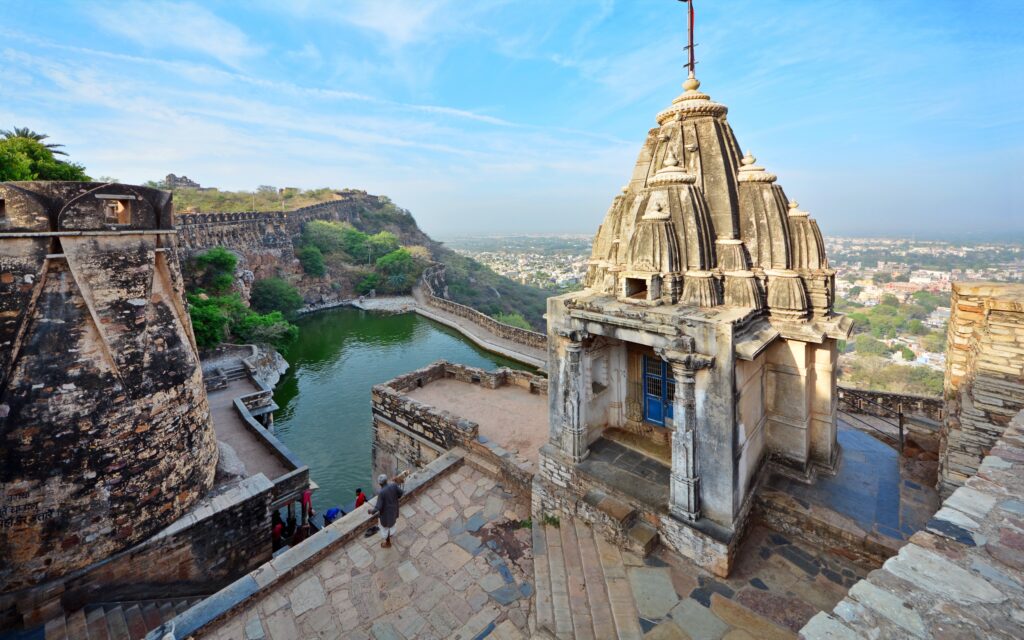
These cenotaphs are considered architectural marvels. The tower of the fort is nine-storeyed and is adorned with sculptures of Hindu deities and stories from the Ramayana and the Mahabharata. The tower provides a breathtaking view of the city.
Architecture of Palaces
The palace of Rana Kumbha was built using plastered stone. One of the main features of this palace is its series of canopied balconies. Suraj Gate leads to the entrance of this palace, which is associated with a host of legends. Padmini’s palace is an impressive edifice with three storeys.
The old palace, which was ruined due to various reasons, was reconstructed in the early 19th century. The building, as it stands today, is white in colour. The architectural design of the old palace was a nice blend of Rajput and Mughal architecture.
Tags: World Heritage Committee, UNESCO World Heritage Site, limestone bridge, special architectural designs, Mughal architecture.

